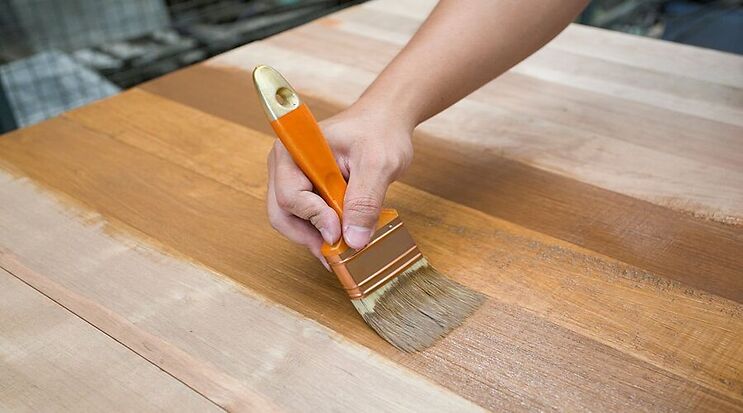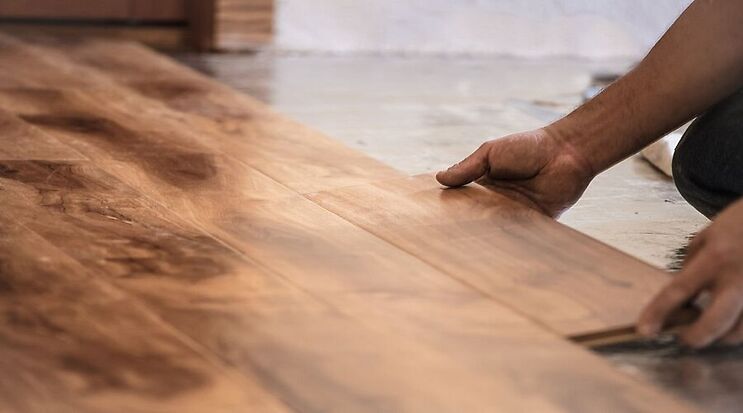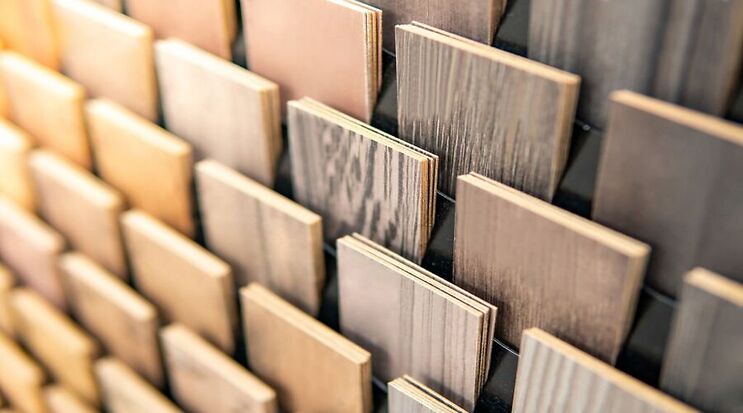Different types of timbers used for decking

Timber decking is a type of flooring made from hardwood timber that offers excellent structural integrity. It is often used outdoors, such as patios, balconies, and gardens. Timber decking can be stained or painted to match the surrounding decor, and it is a popular choice for homeowners because it is affordable and easy to maintain.
Whether you’re putting in a brand new deck or just giving your old one a facelift, choosing the type of timber is an important decision. Unfortunately, not all timbers are created equal—some are harder than others, some are more weather-resistant, and some look better. Here are 8 of the most common beautiful timbers used for timber decking to help you decide which one is right for you.
Treated pine
Pine timber is a general term used for lumber that has been pressure-treated with a waterborne preservative. This treatment dramatically increases the lumber’s resistance to decay, rot, and other environmental conditions.
There are many different types of treated pine, each made for various applications. For example, some treated pines are explicitly designed for contact with the ground, while others are used for construction applications such as decking. Therefore, selecting the suitable grade and type of wood that meets your specific needs is essential when choosing treated pine.
Merbau
Merbau is a dark brown Indonesian timber becoming increasingly popular as a decking material in Australia. The timber is durable, resists rot and termites, and has a beautiful grain. Unfortunately, it is also one of the most expensive timbers on the market.
A deck constructed from Merbau will last many years with minimal maintenance. This is because the timber can be treated with a water-repelling sealant to help protect it from the elements. Still, it is essential to remember that Merbau will eventually weather and age even with treatment. Therefore, decking boards should be replaced every 10–15 years, depending on how much they are used and how well they are maintained.
Jarrah
Jarrah timber is a tough, heavy wood resistant to rotting and used for decking, flooring, bridges, wharves, and boat building. Decking made from Jarrah timber is popular in Australia because of its durability rating and for being weatherproof.
Decking made from Jarrah timber is often chosen for its natural beauty and warm appearance; that’s why it’s in the expensive options. It can be stained or oiled to enhance these features or left untreated to mellow over time.

Blackbutt
Blackbutt is a timber species native to the eastern states of Australia. It is a prized hardwood for its strength and durability and is often used for decking, flooring, and other construction applications. Blackbutt has natural features, including gum veins and ambrosia, that give it a unique look. It is ideal for bushfire-prone areas.
Decking made from blackbutt is very popular because it is resistant to rot and decay and can withstand exposure to harsh weather conditions. It also has a natural deep brown color that will darken over time, making it a beautiful addition to any outdoor space.
Spotted Gum
Spotted Gum is timber used for decking, flooring, and other construction purposes and has a wavy grain. It is prized for its strength, durability rating, natural beauty, and low tannin content.
When choosing timber for decking, it is crucial to consider the climate in which the deck will be used. Spotted Gum is ideal for use in hot and cold environments, as it does not expand or contract significantly in response to temperature changes.
Spotted Gum has a natural resistance to rot and decay, making it a long-lasting choice for outdoor decks. It also features a distinctive spotted pattern that makes it an attractive addition to any home.
Ironbark
Ironbark is a type of hardwood that is native to Australia. It is solid and has a high durability rating, making it perfect for use in outdoor applications such as decking.
Ironbark timber is prized for its natural beauty, and it can be left unfinished to weather over time to a silver-gray color. It is also resistant to decay so that it will last a long time, even in harsh climates. So Ironbark should be at the top of your list if you’re looking for a beautiful, long-lasting timber deck.
Kapur
Kapur is a durable timber decking material that originates from Southeast Asia. The natural oils in the wood make it resistant to rot and decay, making it a popular choice for outdoor decks and landscaping projects.
Kapur is available in various natural, stained, and painted finishes. It can be used as a standalone feature or combined with other materials like stone or concrete to create a unique look.
Stringybark
Stringybark is a type of timber sourced from Australian eucalyptus trees. Timber is highly sought after for construction due to its resistance to rot and weathering, making it an ideal material for decking, flooring, and other outdoor applications.
When choosing stringybark for your deck, it’s essential to pick the suitable grade. There are three grades of stringybark construction, select, and premier. Construction grade is ideal for general use, while superior and premier grades are better suited for more high-end projects.
FAQs
How long does installation take?
The time it takes to install timber decking can vary depending on the size and complexity of the project. However, most decks can generally be installed in one or two days.
Installing involves:
- Creating a frame for the deck.
- Laying down a foundation of gravel or crushed stone.
- Installing the decking boards.
- Sealing the seams between the panels with sealant.
In addition, railing posts and stairs may need to be installed as well.
How much does timber decking cost?
There is an extensive range of prices for timber decking, as many different types of timber and finishes are available. In general, untreated timber decking will be the cheapest, while treated or finished timber will be more expensive.
Location is also a factor in the cost of timber decking. In Brisbane, for example, timber decking can vary from around $50 per square metre for untreated pine to over $200 per square metre for treated Merbau.
So it depends on what you’re after—an untreated pine deck or a high-quality treated Merbau deck—and where you live. For a more accurate quote, it’s best to get quotes from local suppliers.

Do I need a permit to build my deck?
In most cases, you will need a building permit to construct a timber deck. This is because decks are considered an extension to your home and fall under the same regulations as other parts of your property.
Brisbane City Council has a helpful guide on its website which outlines what is required for each type of decking material. Generally speaking, if your decking is made from timber, you will need approval from the council before you can begin construction. This is because decks must meet specific structural requirements to ensure they are safe and compliant with Australian standards.
If you’re unsure whether you need a permit, it’s best to consult with your local council or a qualified builder.
Is my contractor supposed to be licensed?
Timber decking contractors in Brisbane are not required to be licensed. However, it is always best to use a licensed and insured contractor.
A timber decking contractor should be able to provide you with a copy of their license and insurance policy. Be sure to ask for this information before hiring them. Also check the licenses and insurance policies yourself to make sure they are valid.
If you have any questions or concerns about your contractor, don’t hesitate to contact the Queensland Building and Construction Commission (QBCC) at http://www.qbcc.qld.gov.au/.
Conclusion
If you’re in the market for timber decking, it’s essential to be aware of the different types of wood available and what each is best suited for. We’ve outlined the 8 most common timbers used in Australia for decking projects and given a little information about their properties. Whether you’re a DIY-er or looking for a contractor, this guide will help you make an informed decision about the type of timber decking that’s right for your project.